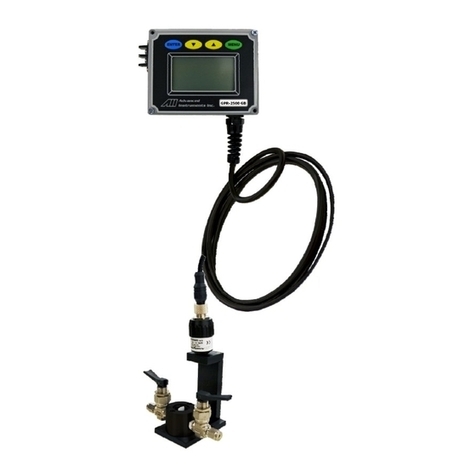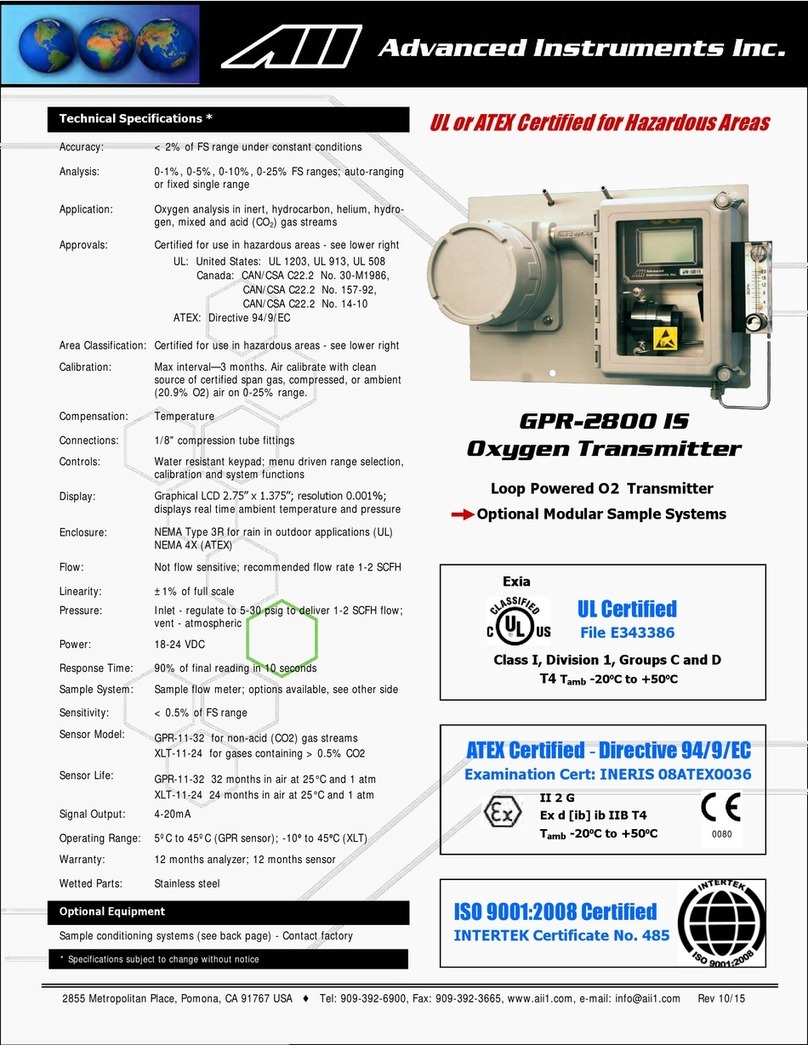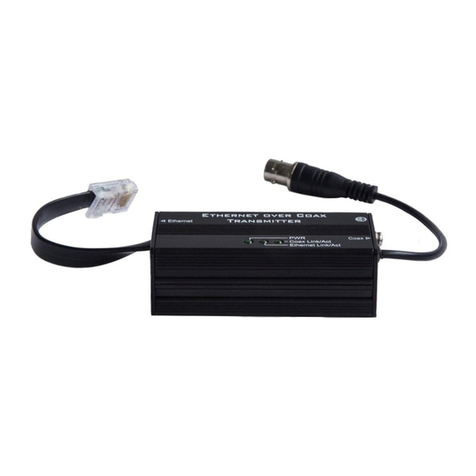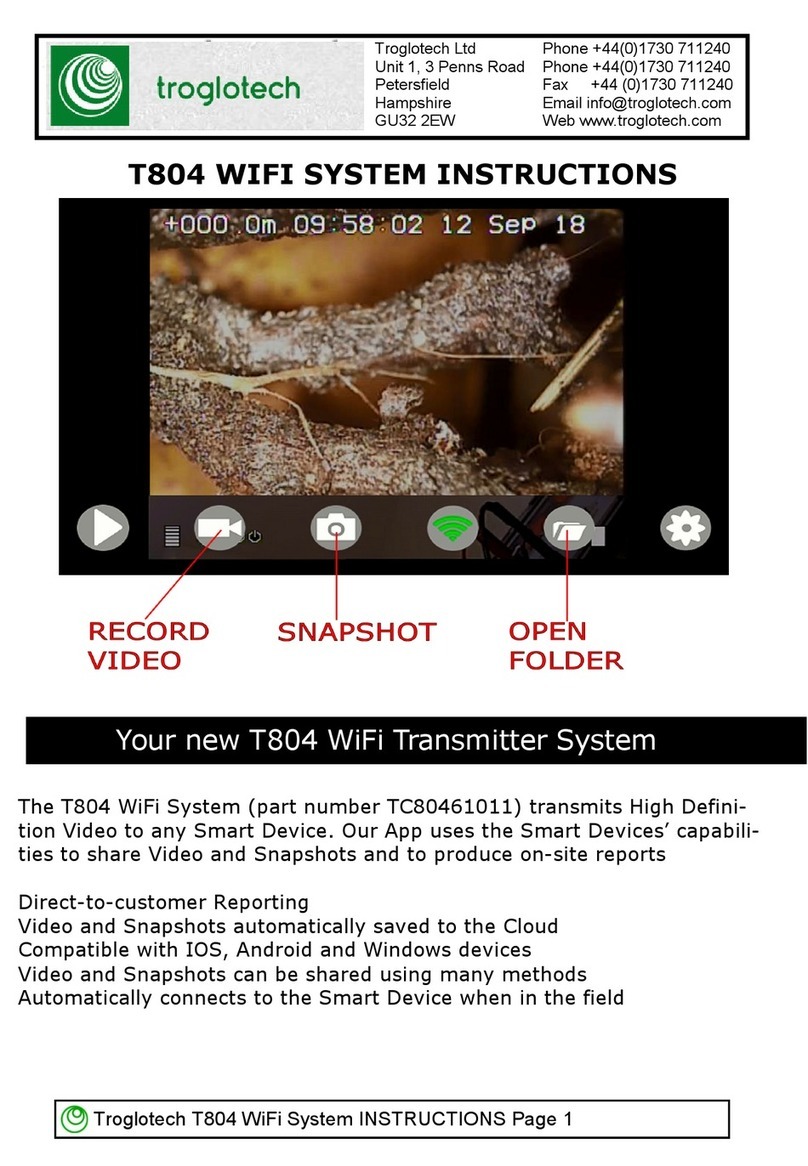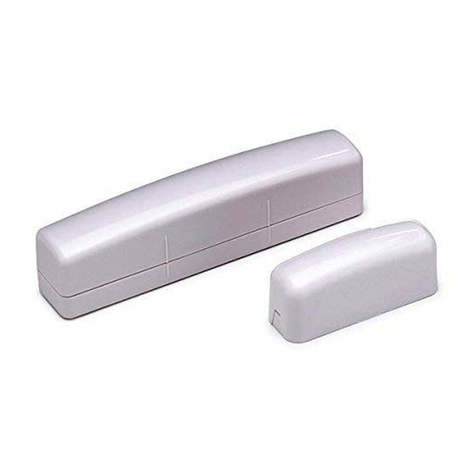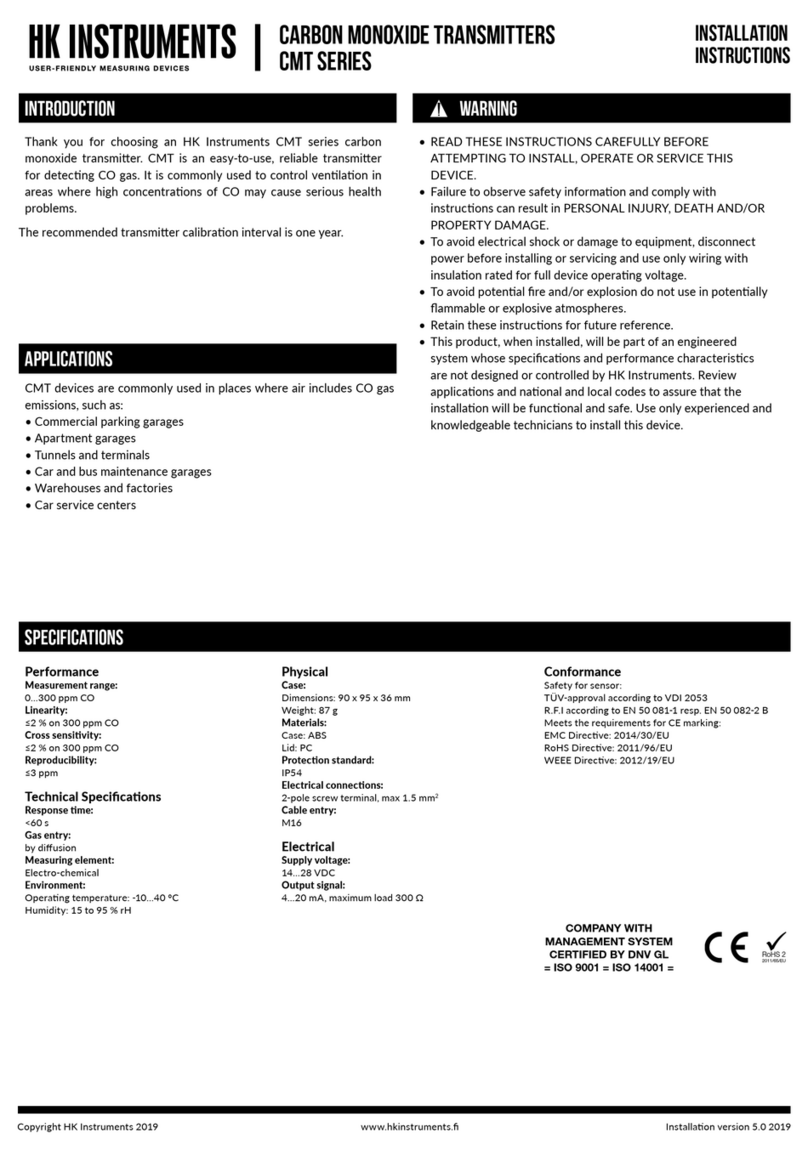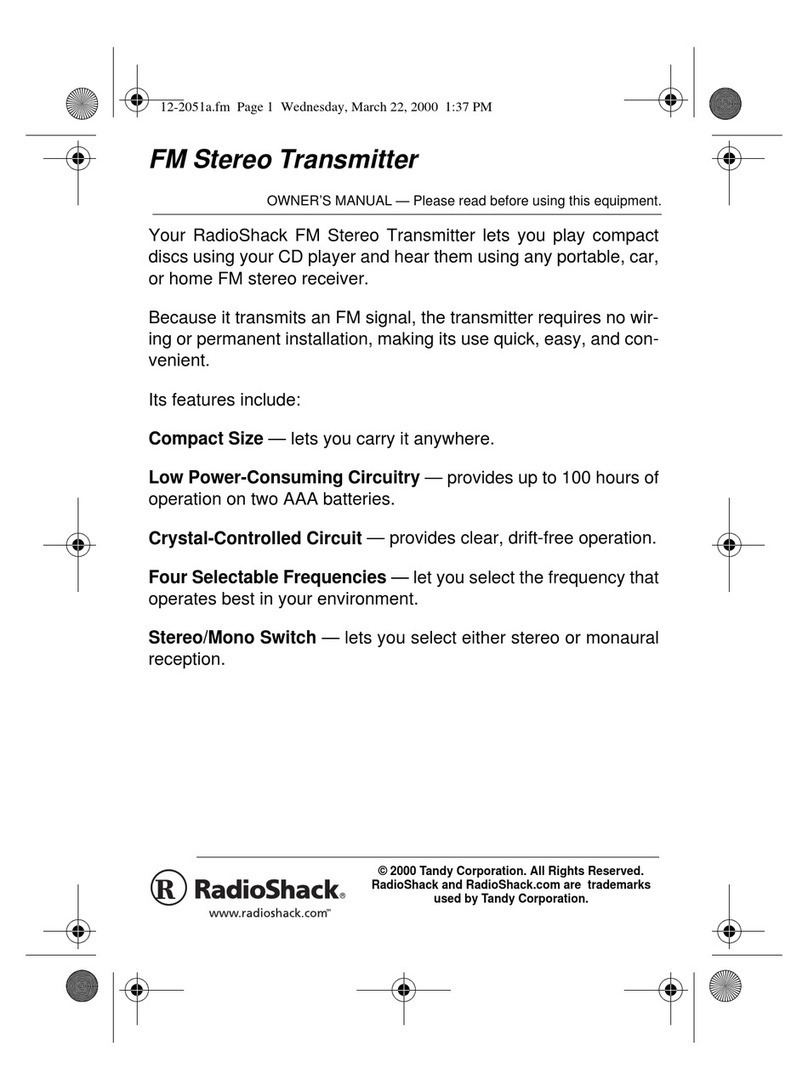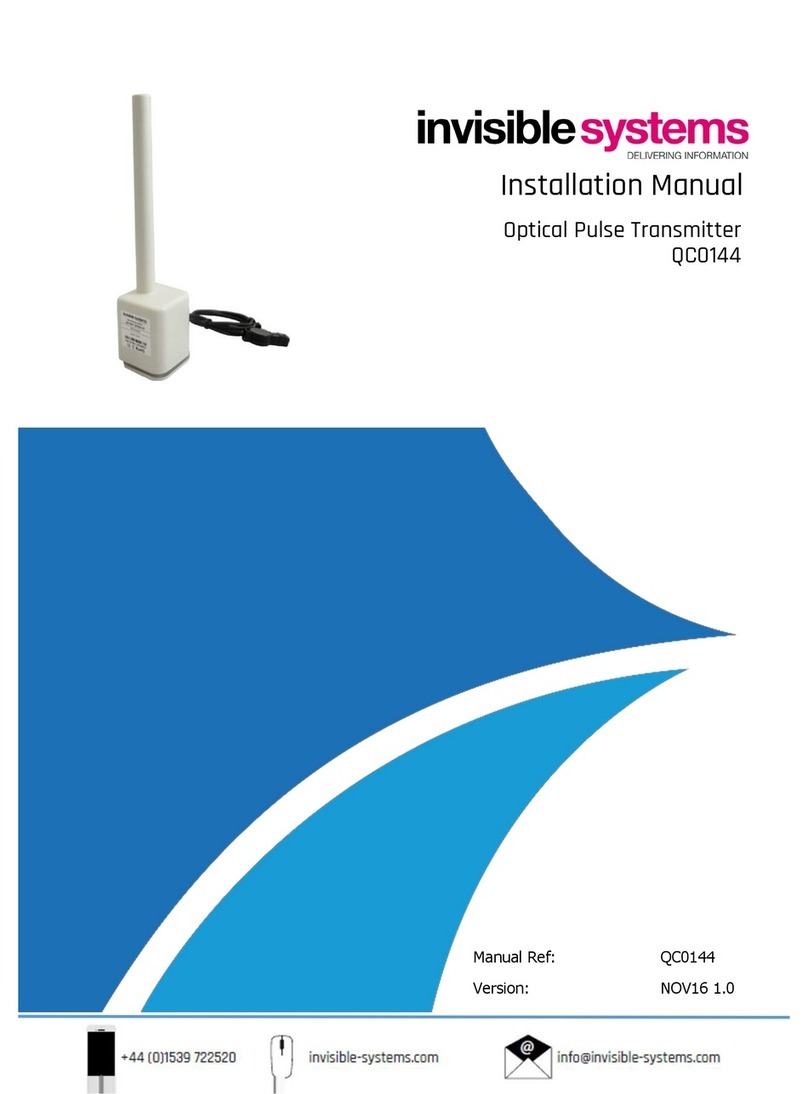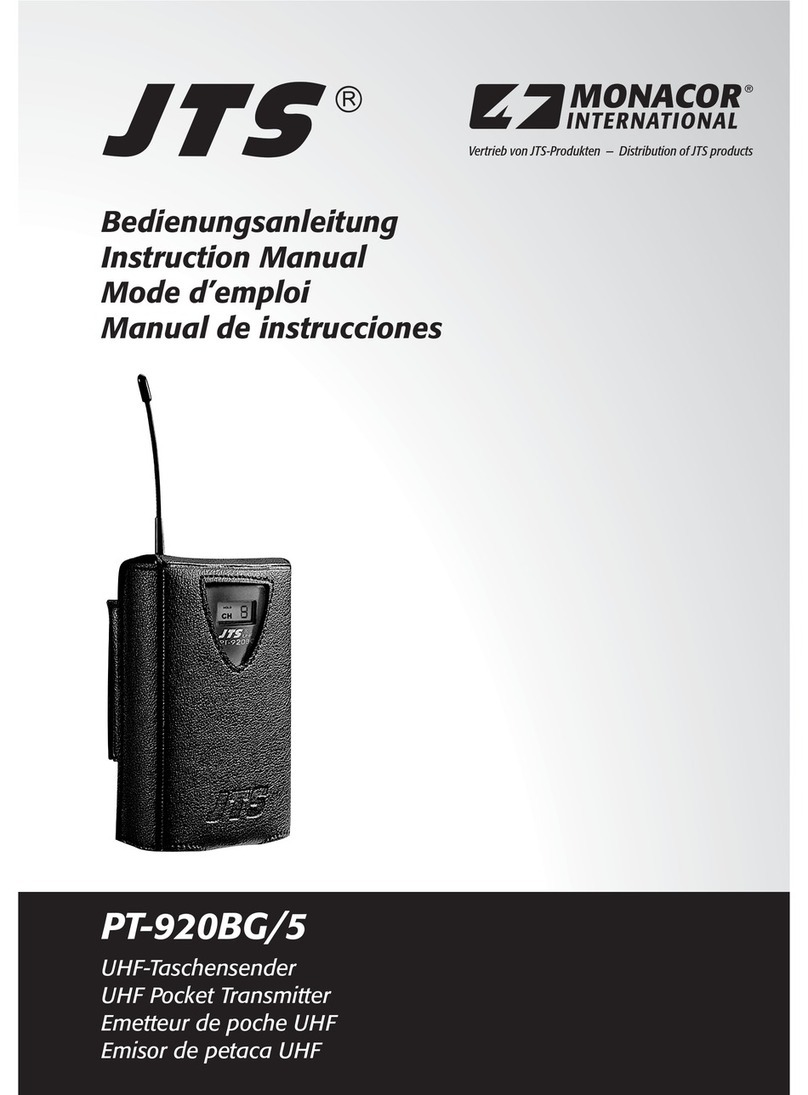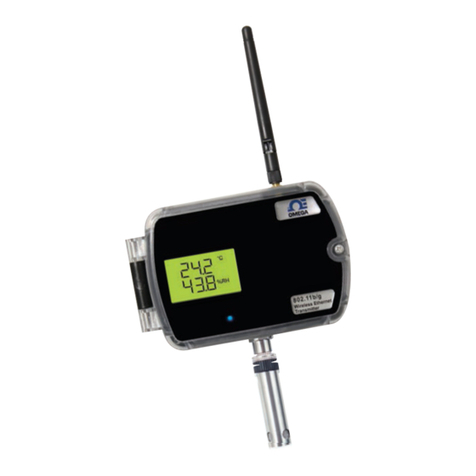Advanced Instruments GPR-2500A User manual

2855 Metropolitan Place, Pomona, CA 91767 USA ♦Tel: 909-392-6900, Fax: 909-392-3665, www.aii1.com, e-mail: [email protected] Rev 10/15
Technical Specifications *
Accuracy: < 2% of FS range under constant conditions
Analysis: 0-1%, 0-5%, 0-10%, 0-25% FS ranges; auto-ranging or
fixed single range
Application: Oxygen analysis in inert, hydrocarbon, helium, hydrogen,
mixed and acid (CO2) gas streams
Area Classification: General purpose
Alarms: Two user configurable alarms: magnetic coil relays rated
3A at 100 VAC, field programmable alarm time delays,
alarm bypass for calibration and system fail alarm
Calibration: Max interval—3 months. Air calibrate with clean source
of certified span gas, compressed, or ambient (20.9%
O2) air on 0-25% range.
Compensation: Barometric pressure and temperature
Connections: 1/8" compression tube fittings
Controls: Water resistant keypad; menu driven range selection,
calibration and system functions
Display: Graphical LCD 2.75” x 1.375”; resolution 0.001%;
displays real time ambient temperature and pressure
Enclosure: Fiberglass NEMA 4X, 4 x 9 x 3", 8 lbs.
Flow Sensitivity: Not flow sensitive, 1-2 SCFH recommended
Linearity: ±1% of full scale
Pressure: Inlet - regulate to 5-30 psig to deliver 1-2 SCFH flow;
vent - atmospheric
Power: 12-28 VDC non-loop or 110-220 VAC
Response Time: 90% of final reading in 13 seconds
Sample System: None
Sensitivity: < 0.5% of FS range
Sensor Model: GPR-11-32-4 for non-acid (CO2) gas streams;
XLT-11-24-4 for gases containing > 0.5% CO2
Sensor Life: GPR-11-32-4 32 months in air at 25ºC and 1 atm
XLT-11-24-4 32 months in air at 25ºC and 1 atm
Signal Output: 4-20mA non-isolated or 1-5V; optional Modbus
Operating Range: 5ºC to 45ºC (GPR sensor), -10ºto 45ºC (XLT sensor)
Warranty: 12 months analyzer; 12 months sensor
Wetted Parts: Stainless steel
Optional Equipment
Sample conditioning system - Contact factory.
* Subject to change without notice
GPR-2500 A
Oxygen Analyzer
12-24 VDC Non-Loop or 110-220 VAC
Powered Oxygen Analyzer
Advanced Galvanic Sensor Technology with
Optional Sample Systems
2 Field Selectable Alarm Setpoints
12-24 VDC or 110-220 VAC Power
4-20 mA Signal Output
Sensitivity 0.5% Full Scale
4 Ranges Standard
Auto Ranging or Single Fixed
Stainless Steel Wetted Parts
ISO 9001:2008 Certified
INTERTEK Certificate No. 485

Advanced Instruments, Inc.
GPR-2500A
% Oxygen Transmitter
Owner’sManual
Revised June 2014
2855 Metropolitan Place, Pomona, CA 91767 USA ♦Tel: 909-392-6900, Fax: 909-392-3665, e-mail: info@aii2.com, www.aii2.com

Advanced Instruments, Inc.
TableofContents
Introduction
1
Quality Control Certification
2
Safety
3
Features & Specifications
4
Operation
5
Maintenance
6
Spare Parts
7
Troubleshooting
8
Warranty
9
Material Safety Data Sheets
10
Drawings
A/R
2

Advanced Instruments, Inc.
1. Introduction
Your new oxygen transmitter incorporated an advanced electrochemical sensor specific to oxygen along
with state-of-the-art digital electronics designed to give you years of reliable precise oxygen
measurements in a variety of industrial oxygen applications.
To obtain maximum performance from your new oxygen transmitter, please read and follow the
guidelines provided in this Owner’s Manual.
Every effort has been made to select the most reliable state of the art materials and components, to
design the transmitter for superior performance and minimal cost of ownership. This transmitter was
tested thoroughly by the manufacturer prior to shipment for best performance.
However, all electronic devices do require service from time to time. The warranty included herein plus a
staff of trained professional technicians to quickly service your transmitter is your assurance that we
stand behind every transmitter sold.
The serial number of this transmitter may be found on the inside the transmitter. You should note the
serial number in the space provided below and retain this Owner’s Manual as a permanent record of your
purchase, for future reference and for warranty considerations.
Serial Number: _______________________
Advanced Instruments Inc. appreciates your business and pledges to make every effort to maintain the
highest possible quality standards with respect to product design, manufacturing and service.
3

Advanced Instruments, Inc.
2. Quality Control Certification
Date:
Customer: Order No.:
Pass
Model:
GPR-2500A Oxygen Transmitter
Sensor: ( ) GPR-11-32-4 Oxygen Sensor
( ) XLT-11-24-4 oxygen Sensor
Serial Nos.: Transmitter ______________________ Sensor
______________________
Accessories:
Owner’s Manual
Configuration:
A-1161-AIS-2 Rev C4 PCB Assembly Main Processing
A-1166-AIS-2 Rev H PCB Assembly Alarms/Power Connection
Software rev:
Ranges: 0-1%, 0-5%, 0-10%, 0-25%
Power: 12-24V DC
Barometric pressure and temperature compensation
NEMA 4X rated wall mount enclosure
Test:
Pass
Pass
Set default zero
Set default span @ 40uA
Alarm delay
Zero calibration
Alarm bypass
Span Calibration Alarm configurations; ALARM 1,
ALARM 2
Analog signal output 4-20mA full scale
Alarm function; ALARM 1, ALARM 2
Calibrates with adequate span adjustment within
10-50% FS
Alarm relays; ALARM 1, ALARM 2
Baseline drift on zero gas < ±2% FS over 24 hour
period
Alarm system fail, dry contact
Noise level < ±1.0% FS Overall inspection for physical
defects
Options:
Notes:
4

Advanced Instruments, Inc.
3. Safety
General
This section summarizes the essential precautions applicable to the GPR-2500A Oxygen Transmitter.
Additional precautions specific to individual transmitter are contained in the following sections of this
manual. To operate the transmitter safely and obtain maximum performance follow the basic guidelines
outlined in this Owner’s Manual.
Caution: This symbol is used throughout the Owner’s Manual to Caution and alert the user
to recommended safety and/or operating guidelines.
Danger: This symbol is used throughout the Owner’s Manual to identify sources of
immediate danger such as the presence of hazardous voltages.
Read Instructions: Before operating the transmitter read the instructions.
Retain Instructions: The safety precautions and operating instructions found in the Owner’s Manual
should be retained for future reference.
Heed Warnings: Follow all warnings on the transmitter, accessories (if any) and in this Owner’s Manual.
Follow Instructions: Observe all precautions and operating instructions. Failure to do so may result in
personal injury or damage to the transmitter.
Pressure and Flow
Inlet Pressure: GPR-2500A Oxygen Transmitters are designed for flowing samples, equipped with 1/8”
bulkhead tube fitting connections on the side of the unit (unless otherwise indicated, either fitting can
serve as inlet or vent) and are intended to operate at positive sample pressure regulated between 5-30
psig.
Caution: If equipped with a H2S scrubber as part of an optional sample conditioning system,
inlet pressure must not exceed 30 psig.
Outlet Pressure: The sample gas must be vented to atmosphere or vent pipe with atmospheric
pressure.
Installation
Oxygen Sensor: DO NOT open the sensor. The sensor contains a corrosive liquid electrolyte that could
be harmful if touched or ingested, refer to the Material Safety Data Sheet contained in the Owner’s
Manual appendix. Avoid contact with any liquid or crystal type powder in or around the sensor or sensor
housing, as either could be a form of electrolyte. Leaking sensors should be disposed of in accordance
with local regulations.
Mounting of the Transmitter:The transmitter is approved for indoor or outdoor use. Mount the
transmitter on a flat surface.
Power Requirement: Supply power to the transmitter only as rated by the specification or markings on
the transmitter enclosure. The wiring that connects the transmitter to the power source should be
installed in accordance with recognized electrical standards and so they are not pinched particularly near
the power source and the point where they attach to the transmitter. Never yank wiring to remove it
from an outlet or from the transmitter.
Operating Temperature: The maximum operating temperature is between 00C to 45º C.
Heat: Situate and store the transmitter away from sources of heat.
5

Advanced Instruments, Inc.
Liquid and Object Entry: The transmitter should not be immersed in any liquid. Care should be taken
so that liquids are not spilled into and objects do not fall into the inside of the transmitter.
Handling: Do not use force when using the switches or terminal blocks. Before moving your transmitter,
be sure to disconnect the wiring/power cord and any cables connected to the output terminals located on
the transmitter.
Maintenance
Serviceability: Except for replacing the oxygen sensor, there are no parts inside the transmitter for the
operator to service.
Only trained personnel with the authorization of their supervisor should conduct maintenance.
Oxygen Sensor: DO NOT open the sensor. The sensor contains a corrosive liquid electrolyte that could
be harmful if touched or ingested, refer to the Material Safety Data Sheet contained in the Owner’s
Manual appendix. Avoid contact with any liquid or crystal type powder in or around the sensor or sensor
housing, as either could be a form of electrolyte. Leaking sensors should be disposed of in accordance
with local regulations.
Troubleshooting: Consult the guidelines in Section 8 for advice on the common operating errors before
concluding that your transmitter is faulty.
Do not attempt to service the transmitter beyond those means described in this Owner’s Manual. Do not
attempt to make repairs by yourself as this will void the warranty as per Section 10 and may result in
electrical shock, injury or damage. All other servicing should be referred to qualified service personnel.
Cleaning: The transmitter should be cleaned only as recommended by the manufacturer. Wipe off dust
and dirt from the outside of the unit with a soft damp cloth then dry immediately. Do not use solvents or
chemicals.
Nonuse Periods: If the transmitter is equipped with a range switch advance the switch to the OFF
position and disconnect the power when the transmitter is left unused for a long period of time.
6

Advanced Instruments, Inc.
4. Features and Specification
7

Advanced Instruments, Inc.
5. Operation
Principle of Operation
The GPR-2500A oxygen transmitter incorporates a variety of advanced galvanic fuel cell type sensors.
The transmitter is a compact efficient package configured with the oxygen sensor and separate circuit
boards for signal processing and terminals for incoming power, power supply, signal output and alarm
relay contacts housed in a general purpose NEMA 4X rated enclosure.
Advanced Galvanic Sensor Technology
The sensors function on the same principle and are specific for oxygen. They measure the partial
pressure of oxygen from low ppm to 100% levels in inert gases, gaseous hydrocarbons, helium,
hydrogen, mixed gases, acid gas streams and ambient air. Oxygen, the fuel for this electrochemical
transducer, diffusing into the sensor reacts chemically at the sensing electrode to produce an electrical
current output proportional to the oxygen concentration in the gas phase. The sensor’s signal output is
linear over all ranges and remains virtually constant over its useful life. The sensor requires no
maintenance and is easily and safely replaced at the end of its useful life.
Electronics
The signal generated by the sensor is processed by state of the art low power micro-processor based
digital circuitry. The first stage amplifies the signal. The second stage eliminates the low frequency noise.
The third stage employs a high frequency filter and compensates for signal output variations caused by
ambient temperature changes. The result is a very stable signal. Sample oxygen is analyzed very
accurately. Response time of 90% of full scale is less than 10 seconds (actual experience may vary due
to the integrity of sample line connections, dead volume and flow rate selected) on all ranges under
ambient monitoring conditions. Sensitivity is typically 0.5% of full scale low range. Oxygen readings may
be recorded by an external device via the 0-1V signal output jack.
The circuit for the 4-20mA signal output and two adjustable alarms is powered by a DC/DC transformer
that requires a 12-24VDC power source and separate wiring for the signal outputs.
Caution: A loop power source is not sufficient to power this transmitter. Further, the 4-20mA signal
output does not require any external power (applying power to 4-20 mA terminal will permanently
damage the transmitter and void transmitter warranty).
Sample System
The GPR-2500A is supplied without a sample conditioning system thereby giving users the option of
adding their own or purchasing a factory designed sample conditioning system. Whatever the choice, the
sample must be properly presented to the sensor to ensure an accurate measurement. Users interested
in adding their own sample conditioning system should consult the factory. Advanced Instruments Inc.
offers a full line of sample handling, conditioning and expertise to meet your application requirements.
Pressure and Flow Consideration
All electrochemical oxygen sensors respond to partial pressure changes in oxygen. The inlet pressure
must always be higher than the pressure at the outlet vent which is normally at atmospheric pressure.
Flow-Through Configuration
The sensor is exposed to sample gas that must flow or be drawn through the sensor housing inside the
transmitter. The GPR-2500A internal sample system includes 1/8” compression tube sample inlet and
vent fittings, a Delrin or optional stainless steel sensor housing.
8

Advanced Instruments, Inc.
Flow rates of 1-5 SCFH cause no appreciable change in the oxygen reading. However, flow rates above 5
SCFH generate backpressure and erroneous oxygen readings because the diameter of the integral tubing
cannot evacuate the sample gas at the higher flow rate. The direction the sample gas flows is not
important, thus either of the two tube fitting connectors can serve as the inlet or vent.
A flow indicator with an integral metering valve upstream of the sensor is
recommended as a means of controlling the flow rate of the sample gas. A flow rate of
1-2 SCFH or 0.4-1 liter per minute is recommended for optimum performance.
Caution: Do not place your finger over the vent (it pressurizes the sensor)
to test the flow indicator when gas is flowing to the sensor. Removing your
finger (the restriction) generates a vacuum on the sensor and may damage
the sensor (voiding the sensor warranty).
Application Pressure - Positive:
A flow indicator with integral metering valve positioned upstream of the sensor is recommended for
controlling the sample flow rate between 1-5 SCFH. If necessary, a pressure regulator (pressure regulator
with a metallic diaphragm is recommended for optimum accuracy, the use of more permeable materials
may result in erroneous readings) upstream of the flow control valve should be used to regulate the inlet
pressure between 5-30 psig.
Caution: If equipped with a H2S scrubber as part of an optional sample conditioning system, inlet
pressure must not exceed 30 psig.
Application Pressure - Atmospheric or Slightly Negative:
For accurate oxygen measurements, an optional external sampling pump should be positioned upstream
of the sensor to draw the sample from the process and push it through the sensor housing and out to
atmosphere. A flow meter is not necessary if the discharge of the sampling pump approximates the
recommended 1-2 SCFH flow rate.
If pump loading is a consideration, a second throttle valve on the pump’s inlet side may be necessary to
provide a bypass path so the sample flow rate is within the above parameters.
Delrin Senor Housing with sensor installed.
9

Advanced Instruments, Inc.
To avoid erroneous oxygen readings and damage to the sensor:
•Do not place your finger over the vent (it pressurizes the sensor) to test the flow indicator when
gas is flowing to the sensor. Removing your finger (the restriction) generates a vacuum on the
sensor and may damage the sensor (voiding the sensor warranty).
•Assure there are no restrictions in the sample or vent lines
•Avoid drawing a vacuum that exceeds 14” of water column pressure – unless done gradually
•Avoid excessive flow rates above 5 SCFH which generate backpressure on the sensor.
•Avoid sudden releases of backpressure that can severely damage the sensor.
•Avoid the collection of particulates, liquids or condensation collect on the sensor that could block
the diffusion of oxygen into the sensor.
•If the transmitter is equipped with an optional integral sampling pump (positioned downstream of
the sensor) and a flow control metering valve (positioned upstream of the sensor), completely
open the flow control metering valve to avoid drawing a vacuum on the sensor and placing an
undue burden on the pump.
10

Advanced Instruments, Inc.
Choices of Calibration & Accuracy
Single Point Calibration: As previously described the galvanic oxygen sensor generates an electrical
current sensor exhibiting an absolute zero, e.g. the sensor does not generate a current output in the
absence of oxygen. Given these linearity and absolute zero properties, single point calibration is possible.
Pressure: Because sensors are sensitive to the partial pressure of oxygen in the sample gas their
output is a function of the number of molecules of oxygen 'per unit volume'. Readouts in percent are
permissible only when the total pressure of the sample gas being analyzed remains constant. The
pressure of the sample gas and that of the calibration gas(es) must be the same (reality < 1-2 psi).
Temperature: The rate oxygen molecules diffuse into the sensor is controlled by a Teflon membrane
otherwise known as an 'oxygen diffusion limiting barrier' and all diffusion processes are temperature
sensitive, the fact the sensor's electrical output will vary with temperature is normal. This variation is
relatively constant 2.5% per ºC. A temperature compensation circuit employing a thermistor offsets this
effect with an accuracy of +5% (over the recommended operating temperature range) or better and
generates an output signal that is relatively independent of temperature. Note: There is no error if the
calibration and sampling are performed at the same temperature or if the measurement is made
immediately after calibration. Lastly, small temperature variations of 10-15º produce < +1% error.
Accuracy: In light of the above parameters, the overall accuracy of an transmitter is affected by two
types of errors: 1) those producing 'percent of reading errors', illustrated by Graph A below, such as +5%
temperature compensation circuit, tolerances of range resistors and the 'play' in the potentiometer used
to make span adjustments and 2) those producing 'percent of full scale errors', illustrated by Graph B,
such as +1-2% linearity errors in readout devices, which are really minimal due to today's technology
and the fact that other errors are 'spanned out' during calibration.
Graph C illustrates these 'worse case' specifications that are typically used to develop an transmitter's
overall accuracy statement of +2% of full scale at constant temperature or +5% over the operating
temperature range. QC testing is typically <+0.5% prior to shipment.
11

Advanced Instruments, Inc.
Example: As illustrated by Graph A any error, play in the multi-turn span pot or the temperature
compensation circuit, during a span adjustment at 20.9% (air) of full scale range would be multiplied by
a factor of 4.78 (100/20.9) if used for measurements of 95-100% oxygen concentrations. Conversely, an
error during a span adjustment at 100% of full scale range is reduced proportionately for measurements
of lower oxygen concentrations.
Recommendation: Calibrating with a span gas approximating 80% of the full scale range one or two
ranges higher than the full scale range of interest is recommended for 'optimum calibration accuracy'.
Always calibrate at the same temperature and pressure of the sample gas stream.
Starting-up the Analyzer
The GPR-2500A Oxygen Transmitter has been tested, calibrated at the factory prior to shipment with the
sensor installed and is fully operational from the shipping container. Allow the transmitters to stabilize for
30 minutes and then recalibrate the device as instructed below.
Installation Considerations
The GPR-2500A consists of two circuit boards, sensor housing and sample 1/8” sample inlet and vent
connections housed in a NEMA 4X rated enclosure and is suitable for mounting on any vertical flat
surface.
For optimum accuracy zero and calibrate a transmitter after it has been allowed to stabilize, typically 24-
36 hours after installation. Assuming the initial zero is performed according to the procedure described
herein, the analyzer should not require zeroing again until the either the sensor is replaced or a change is
made to the sample system or gas lines. Following the initial zero and calibration, the analyzer should not
require span calibration again for up to 3 months under “normal” application conditions as described in
the published specifications.
Note: As described below, zeroing the transmitter is recommended only for measurements below 1%
and not practical for measurement ranges above 1%. The low end sensitivity (zero capability) has been
verified at the factory; however, no ZERO OFFSET adjustment has been made. A factory adjustment
would be meaningless because of the difference in sample systems and leakage factors between the
factory set-up and the actual application conditions.
Assemble the necessary hardware for mounting the transmitter and optional components - such as
coalescing or particulate filters and pumps, 1/8” metal or plastic tubing for interconnecting the
transmitter and optional components.
Temperature: The sample must be sufficiently cooled before it enters the transmitter and any optional
components. A coiled 10 foot length of ¼” stainless steel tubing is sufficient for cooling sample gases as
high as 1,800ºF to ambient.
Pressure & Flow as described above
Moisture & Particulates: Prevent water and/or particulates from entering the sample system. They can
clog the tubing and damage the optional components such as pumps, scrubbers or sensors. Installation
of a suitable coalescing or particulate filter is required to remove condensation, moisture and/or
particulates from the sample gas to prevent erroneous analysis readings and damage to the sensor or
optional components. Consult the factory for recommendations concerning the proper selection and
installation of components.
Contaminant Gases: A gas scrubber and flow indicator with integral metering valve are required
upstream of the transmitter to remove interfering gases such as oxides of sulfur and nitrogen or
hydrogen sulfide that can produce false readings and reduce the expected life of the sensor. Installation
of a suitable scrubber is required to remove the contaminant from the sample gas to prevent erroneous
analysis readings and damage to the sensor or optional components. Consult the factory for
recommendations concerning the proper selection and installation of components.
12

Advanced Instruments, Inc.
Gas Connections: Inlet and outlet vent gas lines require 1/8” diameter tubing preferably metal.
Power Connection: Locate a source of AC power to meet area classification and to plug in the charging
adapter.
Zero Calibration: Required only for very low percentage range measurements, less than 5% of full
scale at the most sensitive range of the analyzer.
Span Calibration: Users are responsible for certified span gas cylinder, regulator and flow control valve.
The analyzer must be calibrated with a certified span gas and regular intervals, typically every 30 days of
operation.
Mounting the Analyzer
The GPR-2500A is housed in a Fiber Glass NEMA4X rated enclosure. This configuration is designed to be
mounted directly to any flat vertical surface, wall or bulkhead plate with four (4) of the appropriate size
screws. To facilitate servicing the interior of the transmitters, position it approximately 5 feet off ground
level.
•Loosen the four mounting pads at the rear of the enclosure.
•Select four appropriate mounting screws (customer supplied).
•Secure the enclosure to a vertical surface approximately 5 feet from the floor or a level accessible
to service personnel. This requires the user to supply four (4) additional proper size screws and
anchors.
Caution: Do not remove or discard the gaskets from either the enclosure or junction box.
The transmitters design provides protection from RFI that is maintained by leaving specific
mating areas of the enclosure unpainted to maintain conductivity of the gasket, top and
bottom sections of the smaller enclosure housing the electronics. These unpainted areas are protected by
gaskets and contribute to maintaining the NEMA 4 rating as well as protection from RFI/EMI. Do not paint
these areas.
Mounting Pads
13

Advanced Instruments, Inc.
Gas Connections
The GPR-2500A with its standard flow through configuration is designed for positive pressure samples
and requires connections for incoming sample and outgoing vent lines. The user is responsible for
calibration gases and other required components, see below.
Flow rates of 1-5 SCFH cause no appreciable change in the oxygen reading. However, flow rates above 5
SCFH generate backpressure and erroneous oxygen readings because the diameter of the integral tubing
cannot evacuate the sample gas at the higher flow rate. A flow indicator with an integral metering valve
upstream of the sensor is recommended as a means of controlling the flow rate of the sample gas. A flow
rate of 1-2 SCFH or 0.4-1 liter per minute is recommended for optimum performance.
Caution: Do not place your finger over the vent (it pressurizes the sensor) to test the flow
indicator when gas is flowing to the sensor. Removing your finger (the restriction) generates a
vacuum on the sensor and may damage the sensor (voiding the sensor warranty).
Procedure of Connecting Sample Gas:
•Designate one of the bulkhead tube fittings as the VENT and the other as SAMPLE.
•Regulate the sample/span gas pressure to 5-30 PSIG.
•Connect a 1/8” vent line to the compression fitting to be used for venting the sample.
•Connect a 1/8” ZERO, SPAN or SAMPLE line to the fitting designated SAMPLE.
•If equipped with optional fittings and/or sample system, connect the ZERO and or SPAN gas
lines.
•Allow gas to flow through the transmitters and set the flow rate to 1-2 SCFH.
Installing the Oxygen Sensor
•Loosen the two (2) anchors securing the top lid of the enclosure.
•Remove the oxygen sensor from the bag.
•Screw the oxygen sensor into the sensor flow-through housing, finger tighten plus one half (1/4)
turn to ensure a good seal from the o-ring affixed to the sensor.
•Remove the shorting device (looped wire) from the receptacle located at the rear of the sensor.
•Assure the keyway registration of the female plug on the cable and male receptacle on the
sensor match up.
Sample Vent
Sample In
14

Advanced Instruments, Inc.
•Push the female plug on to the sensor mating connector
•Screw the knurled lock nut (attached to the cable) onto to the male connector (attached to the
sensor), tighten finger tight.
•Close the front cover of the transmitter and ensure that the gasket remains in place to maintain
CE approval and NEMA 4 rating.
•Secure the lid by the two (2) anchors
Proceed to calibration (see below for details).
Remote Oxygen Sensor:
Applications requiring the sensor to be located remotely from the electronics dictate
the separate packaging and shipment of the electronics enclosure, oxygen sensor and
sensor flow-trough housing. The appropriate length of cable to connect the sensor to
the electronics is supplied and connected to the electronics. To install the remote
sensor:
•Locate the sensor flow housing and note the through holes in the flanged
sections.
•Identify the spot for installation.
•Using two (2) 6/32 screws of the appropriate type and length secure the
sensor flow-through housing to a flat surface.
•Remove the oxygen sensor from the bag.
•Screw the oxygen sensor into the sensor flow housing (finger tighten plus
one quarter 1/4 turn to ensure a good seal between the o-ring affixed to the
sensor and the sensor housing.
•Remove the shorting device (looped wire) from the receptacle located at the
rear of the sensor.
•Assure the keyway registration of the female plug on the cable and male receptacle on the
sensor match up.
•Push the female plug (including the knurled lock nut) molded to the cable into the male
receptacle of the sensor.
•Screw the knurled lock nut (attached the cable) onto to the male connector (attached to the
sensor), tighten finger tight.
Proceed to calibration (see below for details).
15

Advanced Instruments, Inc.
Electrical Connections
All electrical connections are located in a small junction box located on the side of the larger enclosure.
Power at the specified rating must be supplied via a two wire shielded cable. A safety fuse is also
mounted in the junction box.
Do not supply power beyond the rating. Failure to do so may permanently damage the
analyzer.
The integral 4-20mA converter is internally powered and does not require external power. DO
NOT supply any voltage to either of the two terminals of the 4-20mA output connector. Failure
to do so will permanently damage the 4-20mA converter.
Procedure
•Remove the front cover of the junction box located on left side of the transmitters by removing
the four (4) screws securing the cover and set them aside for reinstallation.
•Loosen the nut of the cable gland (customer provide and mounted at the bottom of the smaller
enclosure).
Two user selectable Alarms
12-24 VDC Power In
Power Fuse
4-20 mA Signal
Power Fail Alarm
16

Advanced Instruments, Inc.
•Insert power and alarm and signal output wires through the cable gland. Strip ~ ¼ inch of the
wires. Insert the stripped end of wires to the appropriate terminals and secure them by
tightening the screws of the terminal block. Note: Use wires that comply with local regulatory
requirements.
•Thread the wires through the cable gland into the inside of the junction box.
•Ensure the positive and negative terminals of the power supply are connected to the appropriate
terminals.
•If using shielded cables, connect the shielding of the cable to the copper ground screw inside the
junction box.
•Replace the junction box cover ensuring the gaskets are in place and tighten the four (4) screws.
•Tighten the cable gland to maintain NEMA 4 rating.
Installation of Oxygen Sensor
The GPR-2500A Oxygen Transmitter is normally equipped with an integral oxygen sensor. It has been
tested and calibrated by the manufacturer prior to shipment and are fully operational from the shipping
container. However, when the application requires a remote sensor (external to the electronics enclosure)
or other special circumstances, the oxygen sensor will be packaged separately and must be installed prior
to operating the transmitter. If the sensor has not been installed at the factory, it will be necessary to
install the sensor in the field.
Note:All transmitters must be calibrated once the installation has been completed and periodically
thereafter as described below. Following the initial installation and calibration, allow the transmitters to
stabilize for 24 hours and perform a calibration again with a certified span gas.
Caution: DO NOT open the oxygen sensor. The sensor contains a corrosive liquid electrolyte
that could be harmful if touched or ingested, refer to the Material Safety Data Sheet contained
in the Owner’s Manual appendix. Avoid contact with any liquid or crystal type powder in or
around the sensor or sensor housing, as either could be a form of electrolyte. Leaking sensors should be
disposed of in manner similar to that of a common battery in accordance with local regulations.
Delrin Housing with Oxygen
Sensor installed
17

Advanced Instruments, Inc.
Span Calibration
Span Gas Preparation
One of the most accurate, reliable and inexpensive means of calibrating the GPR-2500A is to expose the
sensor to the 20.9% oxygen content found in ambient air. However, exposing the sensor to ambient air
with the GPR-2500A flow through configuration requires opening the enclosure and unscrewing the
sensor from its flow housing. However, many users opt to calibrate with a certified span gas which
requires additional components and time.
Caution:When using a certified span gas from a span gas cylinder, do not contaminate the span gas
cylinder when connecting the pressure regulator. When installing the pressure regulator, bleed the air
filled regulator to flush air from the regulator before securing it on the cylinder. When using a span gas,
always bleed the pressure regulator before opening the span gas to the analyzer (this requires a bypass
valve at the exit of the pressure regulator valve).
Note: Always use a certified span gas with an oxygen concentration, balance nitrogen, approximating
50-80% of the full scale range of interest or one range above the intended measuring range. You will
require the following components to deliver a span gas to the analyzer/transmitter.
Set the span gas pressure as close as possible to the sample gas pressure. This will assure a smooth shift
from sample to span or vise versa without the need to readjust the gas flow rate.
18

Advanced Instruments, Inc.
Establishing Power to Electronics
Once the two wires bringing power to the transmitter are properly connected to the terminals inside the
junction box, the digital display responds instantaneously. At power-up, the transmitter performs several
diagnostic system status checks termed “START-UP TEST” as illustrated below:
12-24 VDC Power In
START-UP TEST
ELECTRONICS PASS
TEMP SENSOR PASS
BAROMETRIC SENSOR PASS
REV 2.15
19
Table of contents
Other Advanced Instruments Transmitter manuals
Popular Transmitter manuals by other brands
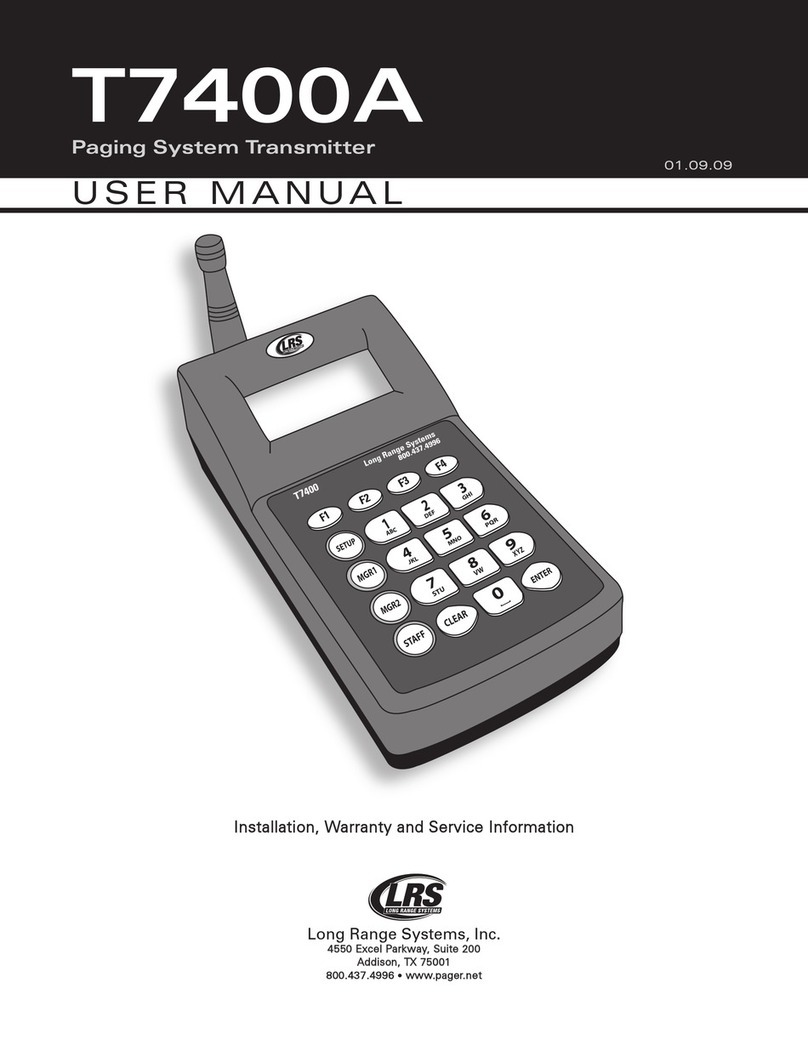
Long Range Systems
Long Range Systems T7400A user manual

Turbines
Turbines FIC712-2 Installation and operation manual

Vaisala
Vaisala DRYCAP DMT345 user guide

WT sensor
WT sensor PCM400 quick start guide

BWI Eagle
BWI Eagle AIR-EAGLE FM2 43-1000N4W-120VAC Product information bulletin

BWI Eagle
BWI Eagle AIR-EAGLE FM2 43-1100R1-DC Product information bulletin

